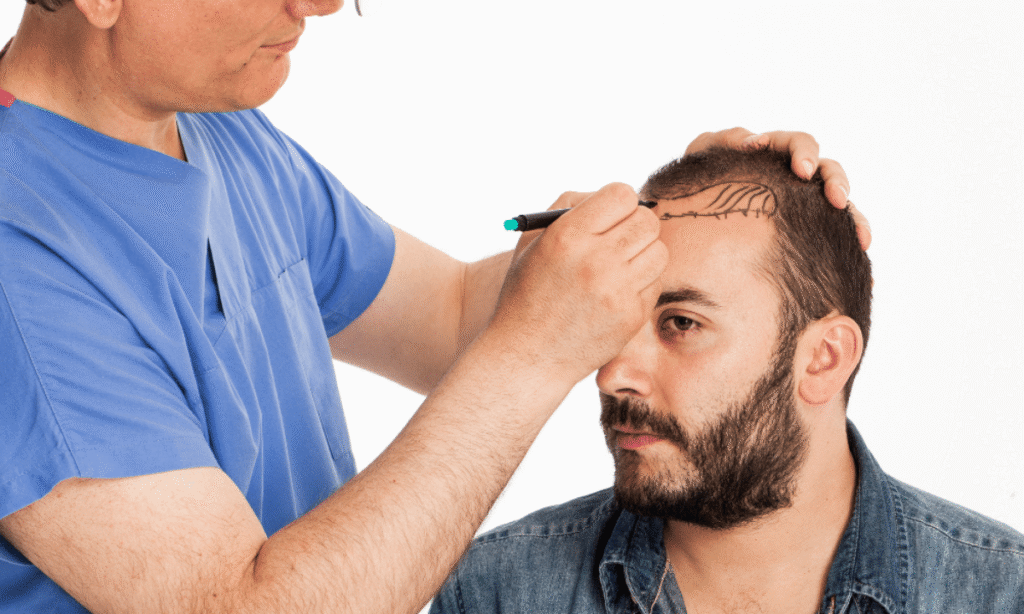Step-by-Step Overview of the Stem Cell Hair Restoration Process
South Korea is globally recognized for its innovation in cosmetic and regenerative medicine. When it comes to stem cell-based hair restoration, Korean clinics offer a high-tech, minimally invasive alternative to hair transplants. But how exactly do doctors harvest and apply stem cells for hair loss treatment?
Below is a comprehensive breakdown of the harvesting, processing, and application process followed in leading Korean stem cell hair restoration clinics.
🔬 Step 1: Initial Consultation and Scalp Analysis
Every treatment begins with a detailed patient assessment, including:
- Digital scalp imaging (to assess follicular density and health)
- Medical history review (including hormonal factors, autoimmune issues, or past surgeries)
- Blood tests (to rule out anemia, thyroid issues, or vitamin deficiencies)
- Hair loss classification (typically using the Norwood or Ludwig scale)
Based on this evaluation, doctors determine if the patient is a good candidate for autologous (self-derived) or allogeneic (donor-derived) stem cell therapy.
🧪 Step 2: Harvesting the Stem Cells
The harvesting method depends on the source of stem cells. Korean clinics commonly use Adipose-Derived Stem Cells (ADSCs) or stem cell-conditioned media. Here’s how they’re collected:
Option 1: Adipose-Derived Stem Cells (from the patient’s fat)
Procedure:
- A small amount of fat (typically 20–50 mL) is extracted via mini-liposuction under local anesthesia.
- Common donor sites: abdomen, thighs, or flanks.
- The procedure takes about 30–45 minutes.
Benefits:
- Autologous, reducing risk of rejection or allergies.
- High yield of mesenchymal stem cells (MSCs) rich in growth factors.
Option 2: Umbilical Cord-Derived or Conditioned Media (donor-derived)
Procedure:
- No extraction from the patient.
- Clinics use ethically sourced, MFDS-approved cell products from certified cell banks.
- Most often used in exosome therapy or stem cell-conditioned media treatments.
🧬 Step 3: Stem Cell Isolation and Activation
After harvesting, the fat or biological material is processed in GMP-certified laboratories:
- Enzymatic digestion or mechanical separation is used to isolate the stromal vascular fraction (SVF), which contains the stem cells.
- Centrifugation and filtration refine the cell population.
- In some cases, growth factors, exosomes, or PRP (platelet-rich plasma) are added to enhance regenerative effects.
This process usually takes 1–2 hours, during which the patient rests comfortably in the clinic.
💉 Step 4: Application to the Scalp
Once ready, the stem cell solution is applied directly to the scalp using one of the following methods:
Method 1: Microinjection
- Stem cells are injected directly into thinning areas using micro-needles.
- Depth: usually 1–3 mm (targeting the dermal papilla).
- Administered under local anesthesia or numbing cream.
- Often performed in multiple sessions (e.g., once every 2–4 weeks for 3 months).
Method 2: Microneedling + Topical Application
- A derma roller or pen is used to create microchannels in the scalp.
- Stem cell serum or conditioned media is applied topically and absorbed through the skin.
- This technique is painless, fast, and ideal for early-stage hair loss.
Method 3: Mesotherapy (Nappage Technique)
- A series of superficial, rapid injections over a wide area.
- Ideal for diffuse hair thinning and preventative treatment.
- Often combined with vitamins and amino acids.
🧊 Step 5: Cooling, Aftercare & Recovery
After treatment, Korean clinics apply soothing serums, cold masks, or LED light therapy to minimize redness and promote healing. Patients are advised to:
- Avoid shampooing for 24 hours.
- Refrain from alcohol, smoking, or sauna use for 48–72 hours.
- Use clinic-recommended hair serums or shampoos enriched with peptides or biotin.
🗓 Recommended Treatment Schedule
| Treatment Phase | Frequency | Purpose |
|---|---|---|
| Initial | Weekly or bi-weekly for 4–6 weeks | Stimulate hair regrowth |
| Maintenance | Every 1–2 months | Sustain growth and prevent shedding |
| Follow-Up | Every 6 months | Monitor progress via digital scalp analysis |
📈 What Results Can Patients Expect?
Most Korean clinics report:
- Noticeable improvement in hair thickness and density within 2–3 months.
- Reduced hair fall within weeks.
- New hair growth in previously dormant follicles after 3–6 sessions.
🧑⚕️ Clinical Expertise in Korean Clinics
Korea’s leading hair loss clinics are staffed by:
- Board-certified dermatologists and plastic surgeons.
- Specialists in regenerative medicine and anti-aging.
- Access to in-house laboratories for real-time stem cell processing.
Final Thoughts
The process of harvesting and applying stem cells in Korea is precise, research-backed, and patient-centered. From mini-liposuction to microneedling delivery, every step is performed under sterile conditions, ensuring maximum safety and efficacy. For patients seeking a non-surgical, science-driven solution to hair loss, this approach represents one of the most advanced options available today.




